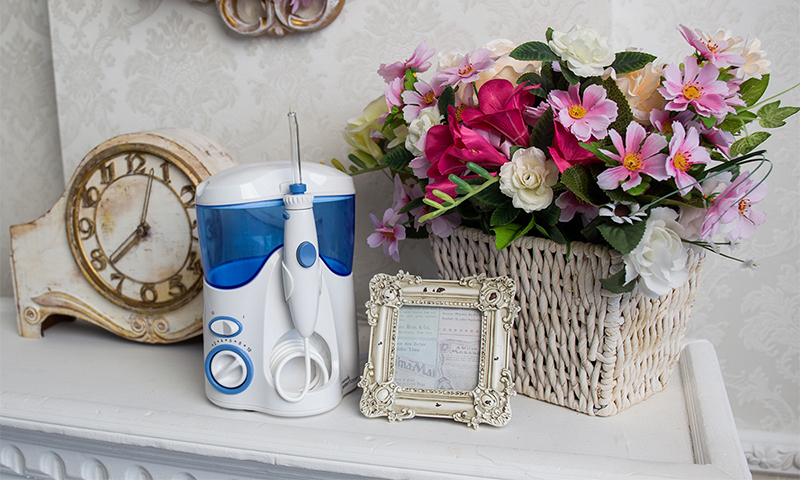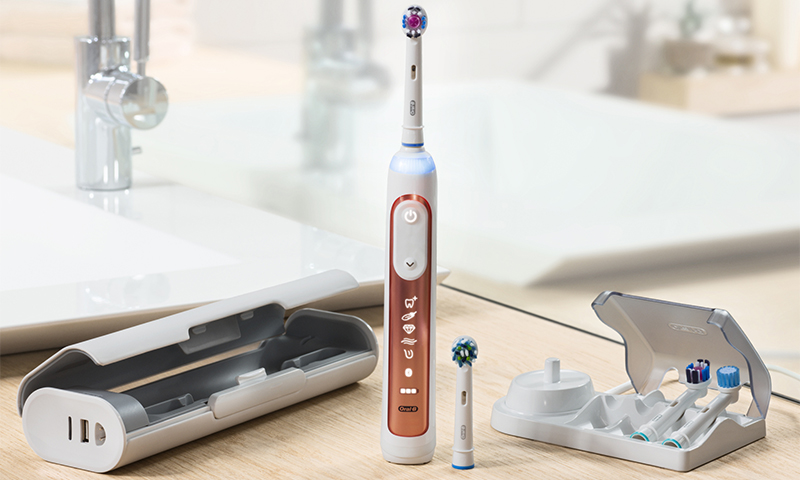Strong and beautiful teeth - the dream of every person. That is why proper hygiene of the oral cavity should be given special attention. Toothpaste is an integral part of the daily care of teeth and gums. It can not only support the health of the oral cavity, but also reduce the manifestations of various dental diseases. How to choose a suitable toothpaste, you will learn in this article.

Content:
The best manufacturers of toothpastes - which company to choose
Before buying, you should decide on the manufacturer of the goods. It is better to give preference to well-known companies that have been producing products in demand in many countries of the world for more than a dozen years.
These companies include:
1. Blend-a-med;
2. Aquafresh;
3. Lacalut.
These brands produce a wide range of oral hygiene products. Their successful activity is due to the high quality of products, which is achieved through strict control of production, the use of the latest technological equipment, the best raw materials and cooperation with leading dentists.
To choose a quality dentifrice, read our top toothpaste rating.
The principle of operation and the device of toothpaste
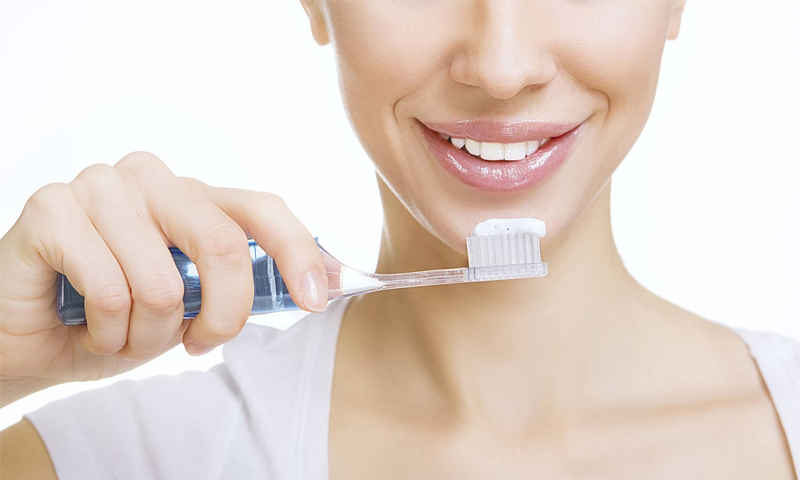
Toothpaste is a tool for daily cleaning of teeth. In addition to its hygienic properties (cleansing of tooth enamel, gums, breath freshening), the paste can have a therapeutic and prophylactic effect.
Last means are most demanded as they can render complex action or eliminate a specific problem. A specific component is responsible for each property of the paste.
The main substances in the paste are:
1. Abrasive components that are responsible for removing plaque (silicon compounds, calcium carbonate, etc.).
2. Foaming agents (SLS, alizarin oil, sodium lauryl sarcosinate). If the paste contains such components, then it has a high cleaning ability, which saves consumption. But with a high concentration of paste can cause irritation of the mucous membrane.
3. Flavors - refresh breath.
4. Taste. Over the years, the most popular is mint. But thanks to the use of various additives, manufacturers offer toothpastes with specific tastes: fresh herbs, pine nuts, chocolate, green tea, vanilla mint, etc. For children, fruit additives are used mainly.
5. Binders - hydrocalloids, which provide a pasty uniform consistency (can be synthetic and natural: sodium alginate, tragacanate, methyl and ethyl cellulose ethers, etc.).
6. Moisturizing ingredients - used to preserve moisture in the paste (glycerin, polyethylene glycol, etc.).
7. Preservatives are necessary so that the paste does not become a breeding ground for microorganisms during storage and use (methylparaben, sodium benzoate, propylparaben, etc.).
Types of toothpastes
Hygienic
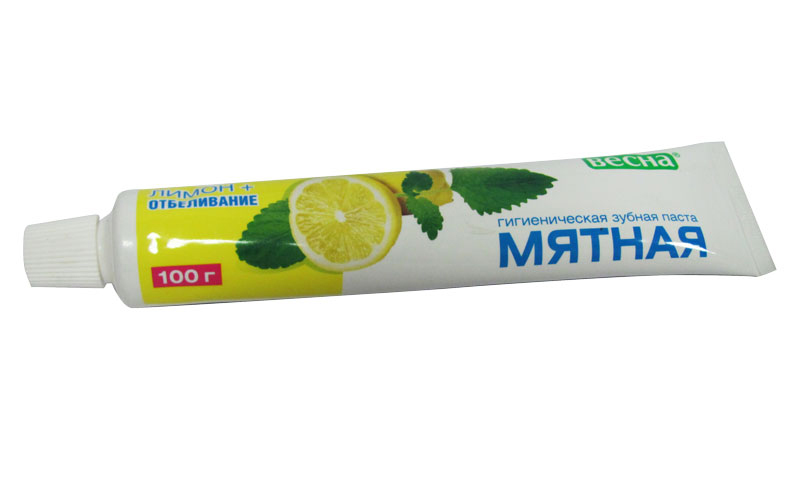
Such pastes are designed to maintain oral hygiene. They refresh the breath and clean the tooth enamel from plaque. This category should also include children's toothpastes, the packaging of which has a bright colorful design, and the taste is soft and sweet. Such tools are great for the care of healthy teeth.
Advantages:
- pleasant taste;
- fresh breath;
- good cleaning properties.
Disadvantages:
- do not prevent bleeding gums, caries, etc.
Whitening
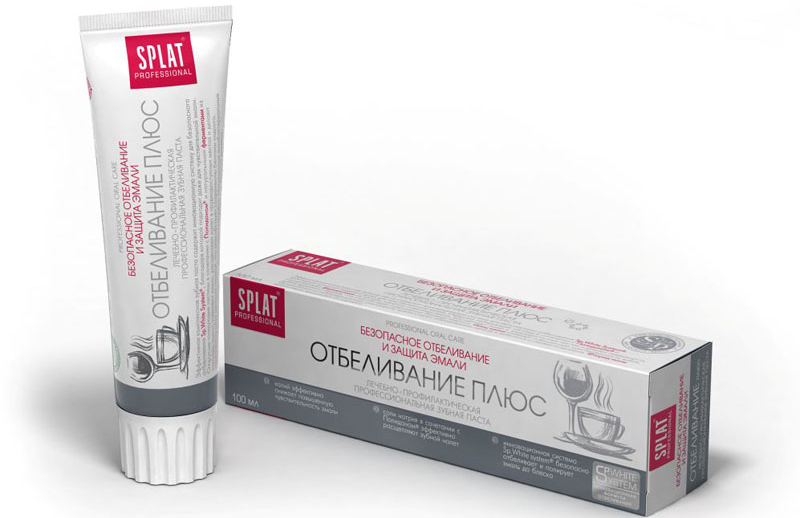
These tools help to give a smile whiteness. Whitening effect occurs with the help of chemical reagents, increased abrasiveness or a combination thereof.
The first whiten the enamel due to a chemical reaction at the time of brushing. These can be special enzymes, pyrophosphates, which destroy bacterial and pigment plaque.
The latter brightens the enamel due to the mechanical cleansing of plaque and pigmentation. If the RDA value exceeds 80 units, then the paste is considered quite aggressive. Means are recommended for maintaining whiteness of teeth, lightening them to a natural shade (1-2 tones).
Advantages:
- maintain the natural whiteness of the teeth;
- eliminate dark spots on the enamel from regular smoking, drinking coffee;
- prevent the formation of tartar.
Disadvantages:
- not recommended for people with damaged enamel;
- cheap pastes of this category have a high level of abrasiveness, due to this they have a whitening effect. Together with the mechanical removal of plaque, the tool can scratch the hard tissues of the tooth, which over time leads to increased sensitivity.
- See also: the best whitening toothpastes
Sedimentary
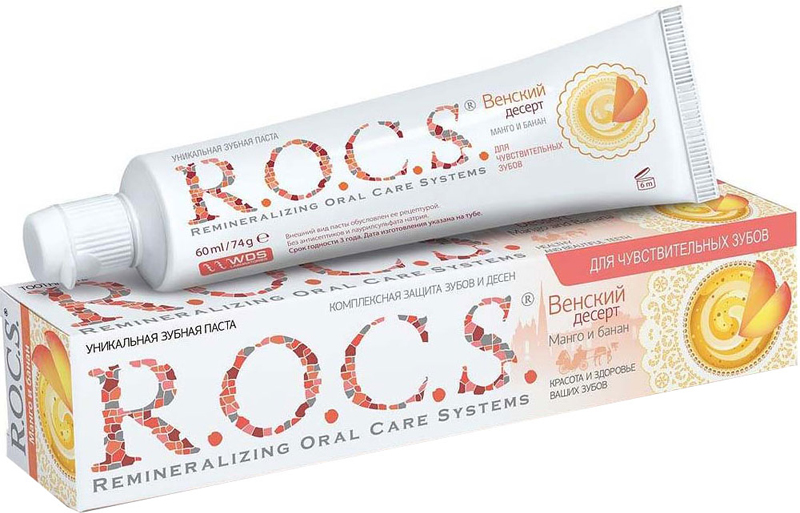
Pastes allow for dental hygiene without scratching the enamel. They are distinguished by a lower content of abrasive particles - not higher than 60. Due to the mineral substances contained in the composition, the agent contributes to their accumulation in the damaged enamel and the restoration of its smoothness.
As a result, the sensitivity of the teeth to the effects of temperature (hot or cold), chemical irritants (sweet, sour), etc., is reduced in humans. Recommended for hyperesthesia.
Advantages:
- reduce the sensitivity of nerve endings;
- restore microdamage of enamel, make it smooth;
- increase the resistance of the enamel to the acidic environment, reduce sensitivity;
- strengthen and heal soft tissues of teeth.
Disadvantages:
- due to low abrasiveness, the quality of plaque removal may be inferior to other pastes.
Anticarious

Such pastes contain fluorine and / or calcium. It is these substances that contribute to the prevention of caries. Efficiency is explained by the fact that fluorine penetrates into the hard tissues of teeth 3 minutes after contact with them.
With regular use, enamel is remineralized and its resistance to negative external influence increases. Fluorine provides a good anti-caries effect during ripening of hard tissues.
If a child brushes his teeth with such a paste, the probability of developing caries is reduced by 35%.
Advantages:
- prevent plaque;
- saturate the enamel with minerals and increase its resistance to acidic environment;
- reduce the likelihood of inflammation in the oral cavity.
Disadvantages:
- with advanced caries it is not recommended to use fluorine-containing pastes, since not only will they not stop the development of pathology, but they will also aggravate the state of the teeth, therefore, anti-caries pastes should be used precisely to prevent caries;
- pastes with fluorine content are contraindicated in fluorosis.
Anti-inflammatory
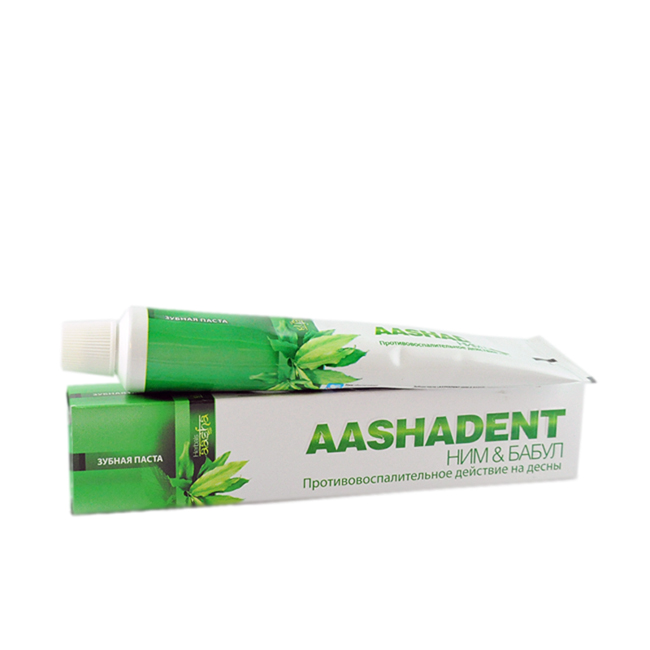
Such pastes may contain vegetable (essential oils, herbal extracts and extracts: chamomile, sage, calendula, oak bark, etc.) and antibacterial components (triclosan, chlorhexidine, etc.). Their main purpose is the fight against pathogenic microflora of the oral cavity and the restoration of damaged soft tissue.
Means should be used for inflammation of the gums: gingivitis, periodontitis, swelling, bleeding, etc. If the paste contains potent ingredients, then it should be used only on the recommendation of a dentist for no more than 3 weeks in a row.
Advantages:
- effective destruction of pathogenic bacteria in the oral cavity;
- powerful antiseptic and antioxidant effect;
- herbal ingredients contribute to the rapid regeneration of soft tissues, reduce bleeding.
Disadvantages:
- many anti-inflammatory pastes in small quantities contain an antibiotic, which in some people may cause allergies;
- not suitable for prophylactic purposes;
- these pastes are not recommended to use often, because antibacterial components can cause oral thrush, dysbiosis, darkening of the enamel, taste disturbances.
Saline

Such tools have a positive effect on the mucous membrane of the mouth. Due to the high concentration of salts, there is an increased outflow of fluid from inflamed soft tissues, which reduces pain in the gums. It is recommended to use for periodontal disease, periodontitis.
Advantages:
- high efficiency;
- improve blood circulation;
- stimulate metabolic processes in the oral mucosa;
- prevention of tartar.
Disadvantages:
- specific taste.
Organic
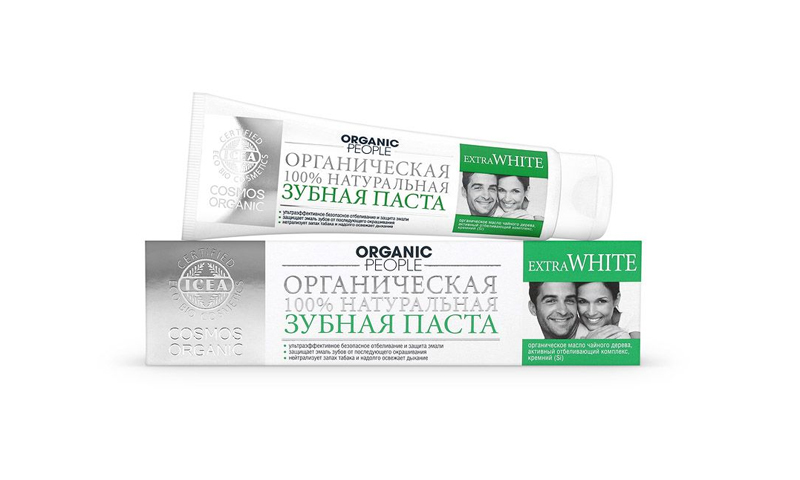
Pastes differ in 100% natural composition. They do not contain aggressive ingredients, so they remove plaque without damaging the enamel.
Natural substances contribute to the improvement of the oral cavity, reducing the sensitivity of teeth and gum inflammation.
Thanks to essential oils and natural flavors (for example, from mint), breathing becomes fresh for a long time. The products are suitable for children, as well as for people with healthy gums and teeth.
Advantages:
- ecologically safe products;
- does not cause dryness in the mouth and damage to the hard tissue of the teeth;
- effective prevention of diseases of the gums and teeth;
- safe for adults and children.
Disadvantages:
- practically do not foam, therefore, requires greater consumption of the product;
- high price.
Toothpaste selection options
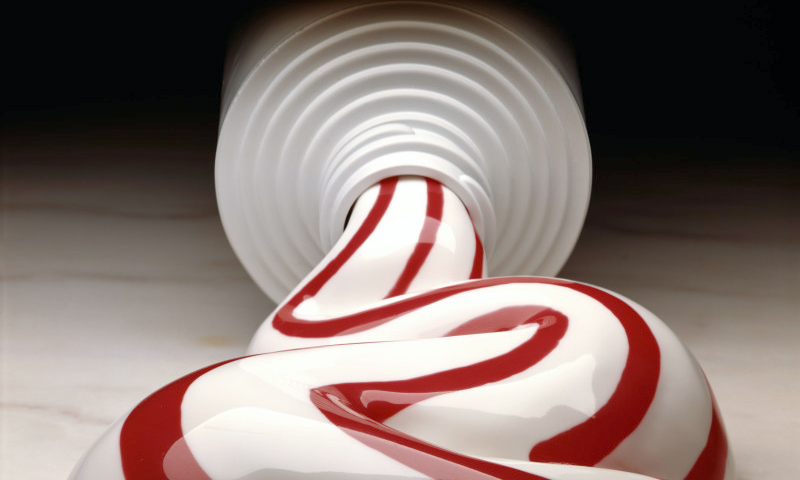
Type of pasta
Choose toothpaste is necessary from the individual human needs and indications for use. If the teeth are healthy, then hygienic pastes will work, if there are any problems with enamel, gums, then it is better to purchase a treatment-and-prophylactic paste.
Composition
Before buying it is recommended to study the composition of the paste. If a person is prone to allergies, then it is possible that some components may cause an allergic reaction. It is better to give preference to products that contain a minimum of preservatives and blowing agents.
Abrasiveness
Pastes can be abrasive (RDA is marked up to 40 on the packaging), moderately abrasive (RDA up to 60), highly abrasive (RDA up to 80) and extremely abrasive (RDA ≥80). Pastes with a high content of abrasive substances have a positive effect on the color of enamel, but negatively on its condition. In order not to injure the hard tooth tissue, it is recommended to choose pastes with abrasiveness not higher than 60.
Taste and smell
Brushing your teeth should not cause unpleasant sensations that can provoke the taste and smell of the paste. Should be selected on the basis of their own preferences.
What toothpaste to choose
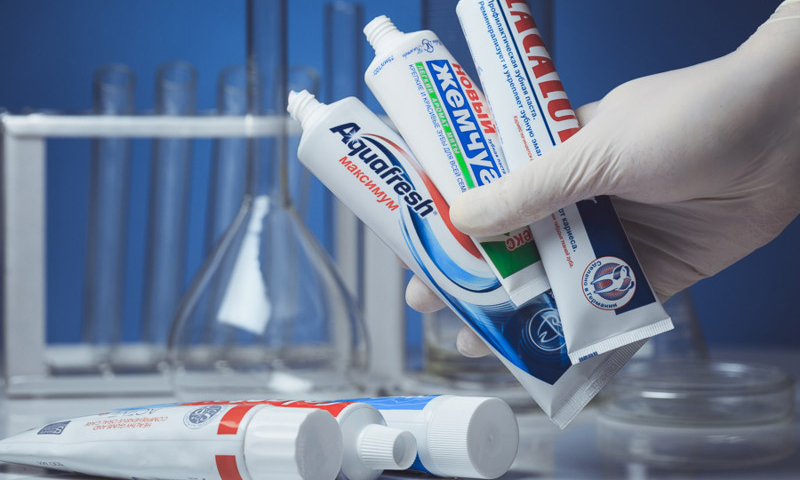
1. For a child, it is better to choose a fluoride or hygienic paste. The first is great for preventing caries, the second provides gentle oral care and is also suitable for cleaning healthy teeth in adults.
2. In case of hypersensitivity, it is necessary to purchase a descriptive toothpaste, which remineralizes enamel and repairs microcracks in the hard tissues of teeth.
3. In case of gum diseases, it is recommended to purchase anti-inflammatory (often contains potent components: antibiotic or antiseptic) or salt paste (has a milder effect than anti-inflammatory and is allowed for long-term use).
4. For lovers of natural products, it is better to purchase organic toothpaste, which is 100% natural ingredients.
5. Whitening paste suitable for those who want to lighten the enamel of the teeth.
How much is the toothpaste
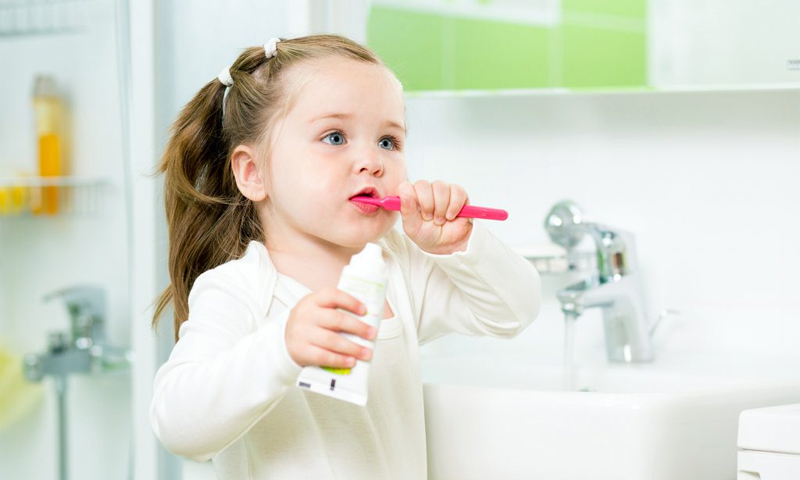
The cost of the paste depends on its composition and manufacturer. Below is the average cost of toothpastes:
1. Hygienic: 300-500 r.
2. Whitening: 500-700 r.
3. Sedimentary: 600-1000 p.
4. Anticarious: 350-550 p.
5. Anti-inflammatory: 450-850 r.
6. Saline: 250-450 r.
7. Organic: 350-600 r.
It will be interesting to friends too


